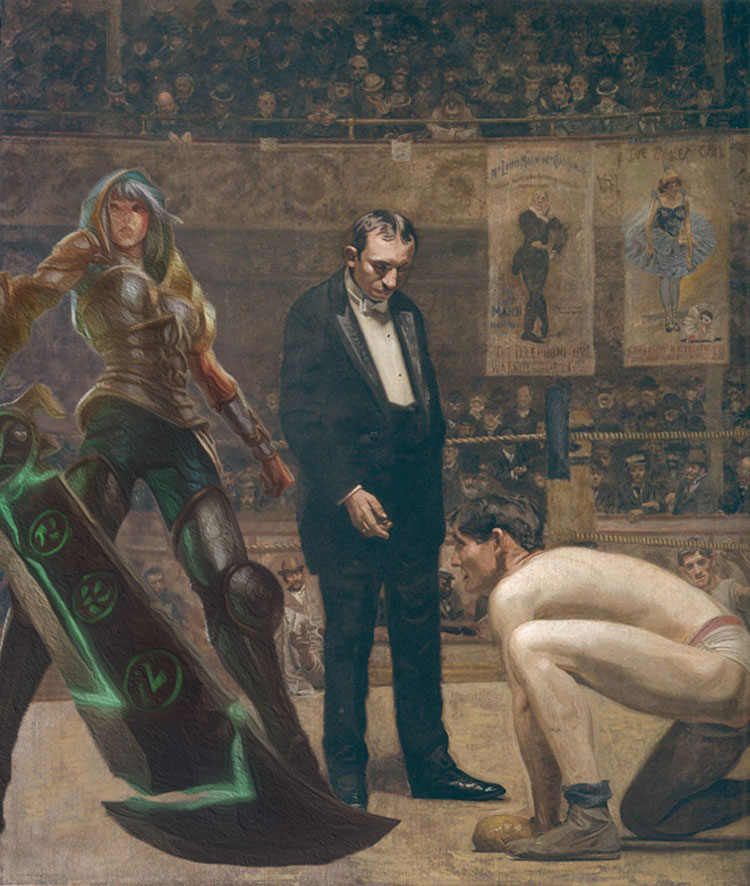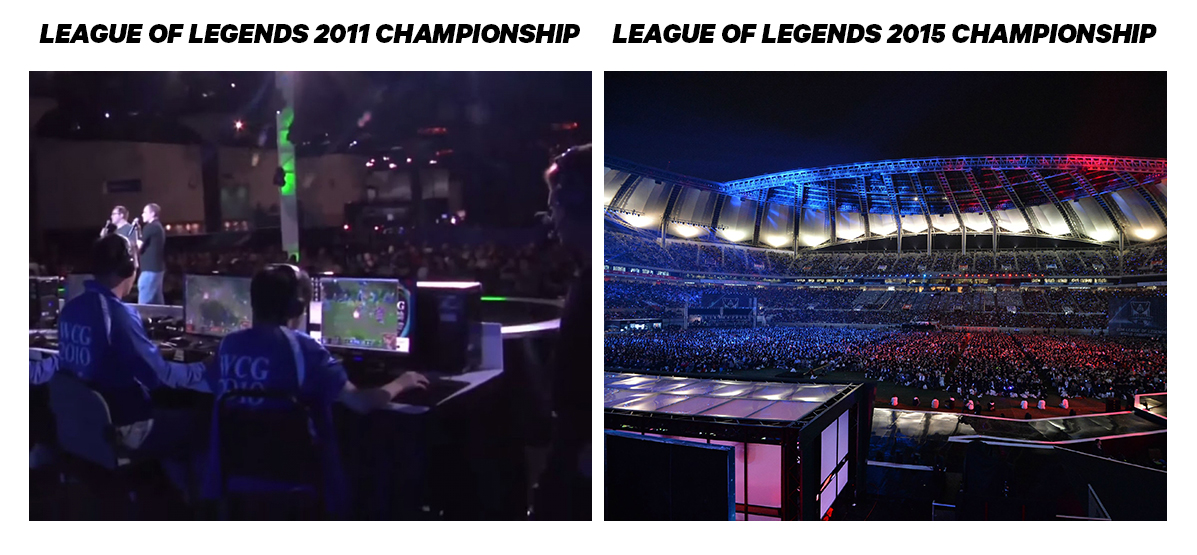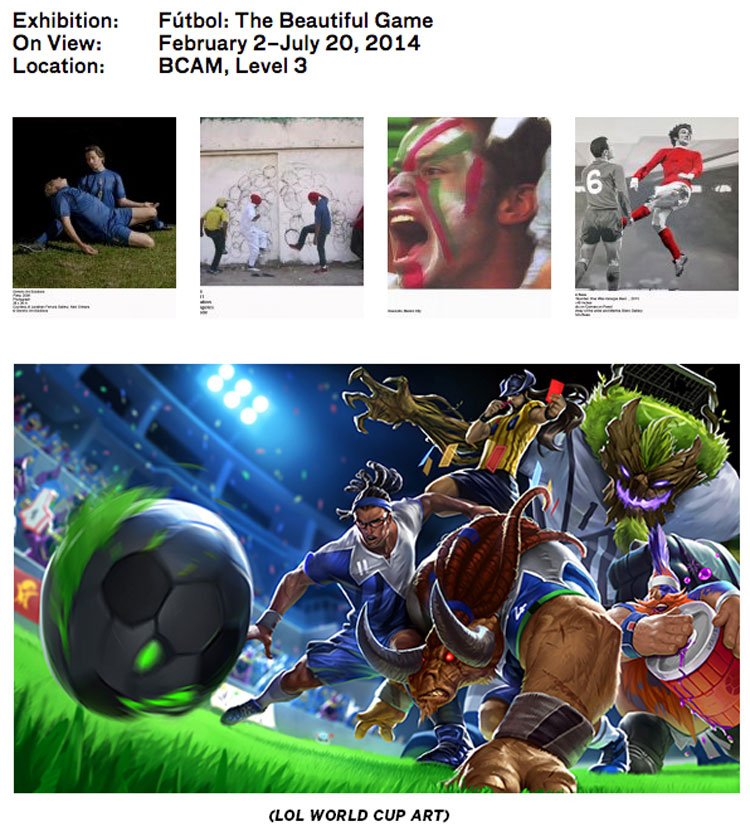
Demystifying MOBAs: An Introduction to an Introduction

Both are in the genre that is typically called Multiplayer Online Battle Arenas, or MOBAs for short. These games are something more than games, combining public performance, money, adrenaline, and fame, they are spectacle incarnate; they are the two most popular esports. Much like football, basketball, or baseball, these two games pack stadiums, create wealthy stars, and have millions and millions of fans around the world.
Both of these games have dominated video game news in the American mainstream media in 2014 and 2015, principally because of the narrative of the meteoric rise of esports in America, Europe, and Asia amongst youth culture. League of Legends (aka LoL), it is often noted, has far more people playing at any one time than World of Warcraft had total subscribers at its peak. Riot even had enough clout to lobby a notoriously fickle and glacial United States Congress to change visa law to allow for sports visas to be used for professional video game players. The 2014 LoL finals packed out the Seoul World Cup football stadium and had almost 30,000,000 people watch it worldwide, which for some perspective was the audience for the NBA basketball finals and baseball’s World Series combined. Though it has a much smaller fan base, Defense of the Ancients 2 (DotA2) often gets major coverage because its premier tournament, The International, tends to have outlandish prize pools that rival most professional poker tournaments, with this year’s International 5 having a pot of $17,736,704 USD and being held in Seattle’s professional basketball arena.
To add to the story, mega-company Blizzard/Activision has placed their own entry, called Heroes of the Storm (HotS), into the esports fray with a massive global inaugural tournament announced only months after its launch. Given that Blizzard is a founding pillar of the esports community with Starcraft, it is clear they mean to compete at the top end of the market. Even when the game was in closed beta testing, they already had multiple leagues underway all around the world, featuring the top clans, A-list teams, celebrity players, and wealthy sponsors.

So with these three games poised to monopolize even more press in 2015, the question becomes how to talk about them past the simple press narrative of lots of prize money and young suddenly famous pro-player-geeks (a popular press narrative in the age of geek-as-perfect-consumer-demographic). A few articles have addressed the legitimately terrible reputation and behavior of these communities and the relative lack of women in these games, but without much explanation or exploration of how that reputation was formed, maintained, or combatted. The broader problem in talking about video games in a nuanced way is massively amplified with MOBAs since all three games are tricky for both lay and academic audiences, especially since it can take literally hundreds of hours to learn to play these games with any amount of skill, let alone to explore their communities. But the seeming complexity of the ever-evolving professional level of gameplay actually masks a large number of broadly interesting and highly accessible starting points for even the casually curious.
One specific impetus for writing this article is my recent art show, Night Walks & Valhalla, featured work utilizing these three MOBAs as source material. Patrons of the fine art world can often be squeamish around video games anyway, but at the opening for the show even the few lovers of video games were openly admitted how they felt MOBAs were alien and impossibly opaque. Even when I talk with game designers and writers, the sentiment that MOBAs are inscrutable (and perhaps of dubious value) is common. This piece is an attempt to create a series of introductions and interactions that would allow anyone, MOBA player or not, skeptic or not, to find a way to access the ways the games, their communities, and the rise of esports tie in to a larger cultural context.
Two sources of inspiration which showed that such a bridge-building endeavor is possible were a pair of recent shows at the Los Angeles Museum of Art which looked at the relationship of sporting and the arts. First was Manly Pursuits: The Sporting Images Of Thomas Eakins which featured large scale paintings of athletes by one of America’s great 19th century artists. The second was Futbol: The Beautiful Game which took a global and multimedia look at the way that the many beauties and problems with football has inspired art in the 21st century. In both shows it was clear how art and sports could be used in tandem to examine each other and the larger cultural landscape which houses them.

Because I’ve been playing these video games and watching tons of esports for reasons other than their intended purpose (though I genuinely enjoy them) I’ve become obsessed with their curious, subtle, and weird details. These are possibly the best starting places to demystifying MOBAs. Even though this series might seem more focused on deconstructing the technical elements of video game design, it is precisely my goal to create a broad series of potentially new ways to talk about these three games and the culture of esports. Some of these views are going to be quite oblique or tangential, since I find that often systematic subtleties are more clearly revealed by looking at the subject from non-standard perspectives. It is completely okay that any given reader is probably not going find all avenues of investigation equally interesting. Each section of this series is intended both as basic information and also as a prompt; as prismatic fractures that will hopefully serve some artist, critic, or curious reader as a starting point for their own exploration of LoL, DotA2, HotS, and of the rise of esports.
Let me re-emphasize that despite looking like a primer, this series will not help you parse a Twitch video of frenzied professional commentators in eye-melting suits rambling about the in-game nuances of things such as, “caster minion aggro lane freezing,” “aggressive tri-lane rotations,” or “anti-counter jungle ward placement.” If you want that, you’ll just have to hop into games, be really bad for a really long time, get called lots of nasty names, and slowly learn. Heaven help you if you’re over 27. That said, it will be valuable to give at least the the most rudimentary overview of these games.

Though the companies disagree on the precise term to call this genre, all three share a large amount of traits. They are 5 vs 5 team competitive games, with each player selecting of a character, moving them around in a 3/4 overhead view with their mouse and using the keyboard to cast their abilities. They all share a single root, which is a fan-created mod of Warcraft 3, and as such share a great deal of similarity with both other real-time strategy games, which emphasize quick decision making and precision movement, and also with fantasy role playing games which emphasize leveling up your character, selecting spells, and utilizing abilities to exploit the weakness of the opponents.
I’ll address the maps in more detail in the third section, but each team has a base on opposite sides of the map and the win condition is to destroy that base. The map is divided into lanes, which are protected by towers, and which various NPC (Non Player Characters) minions constantly spawn and walk down, mindlessly fighting. Players divide up in various ways in these lanes, and try to collect gold and/or experience from these minions, all while fighting the other team. The region between the lanes is generally called the jungle and players can roam through it to help other lanes, kill the monsters within, or to hide.
Since the game is played double-blind, where characters can only see what their teammates can see, much of the game relies on tracking and predicting what your opponents are doing. The games usually have a laning phase (so-called because it mostly happens in the lanes), where the players collect basic resources, which then evolves into ever more fighting and maneuvering with the full 5-person team. When players die, they respawn, with the timers getting longer as the game goes on. Games typically end when one team either becomes overwhelmingly stronger or when one team makes a mistake late in the game and has so many people dead that they can’t defend their base.

For the remaining sections of “Demystifying MOBAs and Esports,” my method is going to be comparing and contrasting the many choices these games make both in their design and their presentation of themselves as a massively public sport. Though art historians often have a tendency to produce ranking systems, if just by necessity because of the very limited space in any given art history text, the most interesting conversations about art have typically been amongst groups of interrelated projects so each can highlight the subtle variations of the others. I know these three games all have stark partisans, but it is far more valuable to give each their due, because looking at how they each try different methods to approach the same issues, and often even overtly revise each other’s perceived shortcomings, tells us far more about the ramifications and results of these games and esports growing to prominence in culture. It is through the prismatic splay of their details that we can gather the most interesting inroads into the conflicts, nuances, and cultures that occur in these games. For the hardcore fans, much of this stuff might seem rudimentary or simplistic (after all, one of the great joys of these games is that every statement has multiple exceptions), but learning to peer at these subtle modulations is critical to getting a handle on finding a broader perspective that connects the historic, economic, social, and artistic forces of these juggernauts.
This month starts the frenzy anew, with DotA2’s The International 5, and the inevitable headlines about 8 digit prize pools fresh in recent memory. Then in October, one of the most anticipated tournaments in esports history, the LoL Season 5 World Finals, will happen and is sure to shatter every previous esport viewing record. Finally, Blizzcon kicks into high gear sweeping hoards over the Disneyland convention center in the California in November to watch the top teams on HotS fight.
So grab a beer, and settle in to see the innumerable highly regimented youthful teams sponsored by top tech companies playing video games in packed sports arenas while millions of fans cheer them on from around the globe, none of whom are watching these events on television. Though so many people want to discuss the virtual reality headset boom as the future-come-true, the rise of MOBAs and esports is in my eyes far stranger and far more more science fiction than walking though any virtual world could be, no matter how high the polygon count. Think of this essay as examining the infrastructure and attitudes that has made our current world so much more like Philip K. Dick than Asimov.
Part 2 - Demystifying MOBAs: Characters - Representing A Digital Pantheon
Part 3 - Demystifying MOBAs: The Pantheon in Action
Part 4 - Demystifying MOBAs: A Charming Stroll Through Flatland’s Battlefield
Part 5 - Demystifying MOBAs: PLAY - The Gory Farming of Glory
Part 6 - Demystifying MOBAs: A History of Speed

